For many, ornate wigs are a defining feature of the historical past, but if they were once so ubiquitous, why did men stop wearing them? Well, that’s what we’ll find out today.
One quick note here: today’s post is about wigs as a common, almost required part of every everyday dress, not as a fashion item as is sometimes still seen today or as used to hide or mitigate hair loss like toupées.
History of Wigs
Before we get into why men stopped wearing wigs, though, it might be helpful to talk about how they came about in the first place.
Societies across the globe have worn wigs for various reasons for millennia. But, in Western Europe, they’re most closely associated with the period from the 16th to late-18th century. These hair accessories were once referred to in English as “perukes,” derived from “parrucca,” the Italian word for “wig.” Also, in English and as a corruption of the term “peruke,” they were sometimes called “periwigs,” from which we get the present-day term “wig.”
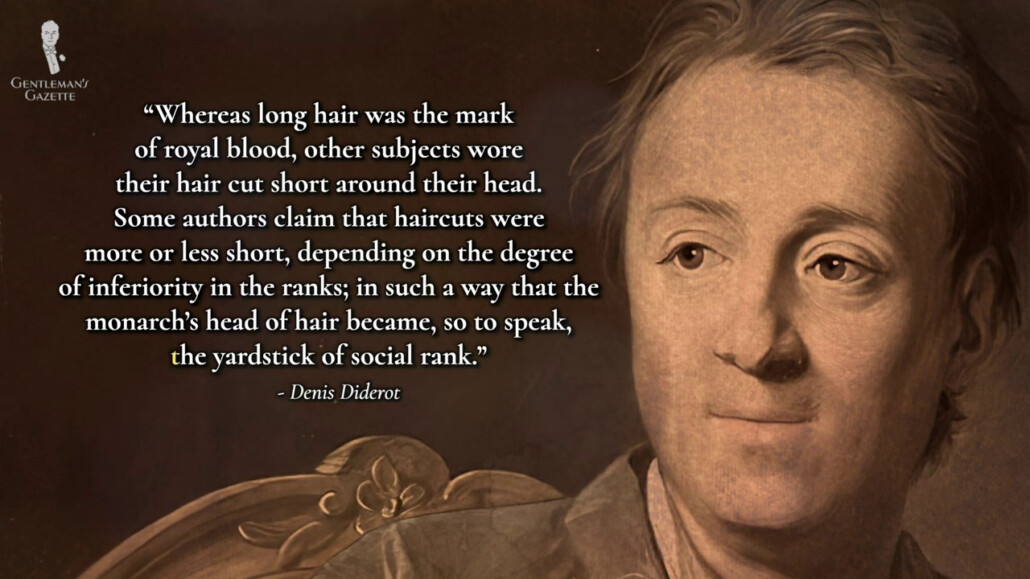
Wigs were worn for both practical and aesthetic purposes, and they were worn in part because long, shining tresses of hair were seen as a mark of refinement, strength, and pure blood. In turn, then, it was assumed that those of royal or noble lineage should have the best hair. In writing about the Franks, progenitors of the kingdom of France, Denis Diderot wrote in 1751 that “hair length was a yardstick of social rank.”
Meanwhile, King Louis XIII of France allegedly started wearing a wig because of hair loss, as did his son, Louis XIV. Following his exile in France, King Charles II of England brought French wigs to the English Court upon his restoration to the throne. This was because the French were the primary tastemakers in Europe at the time and, also, potentially because Charles’ hair was turning prematurely gray.
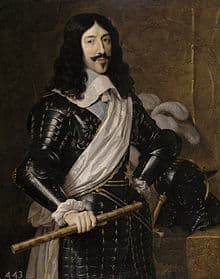
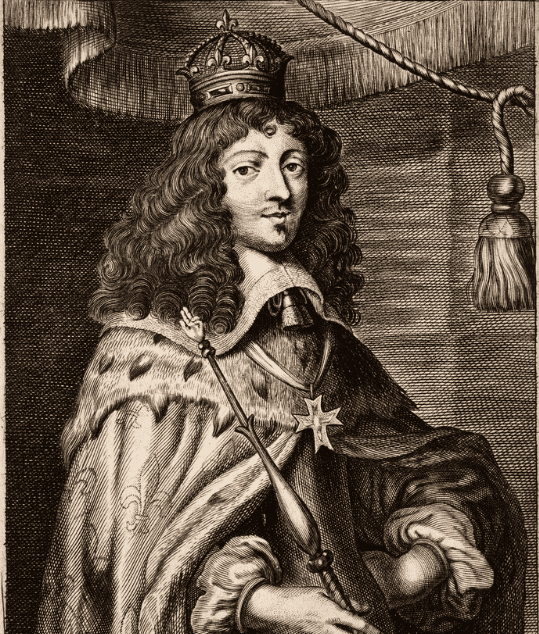
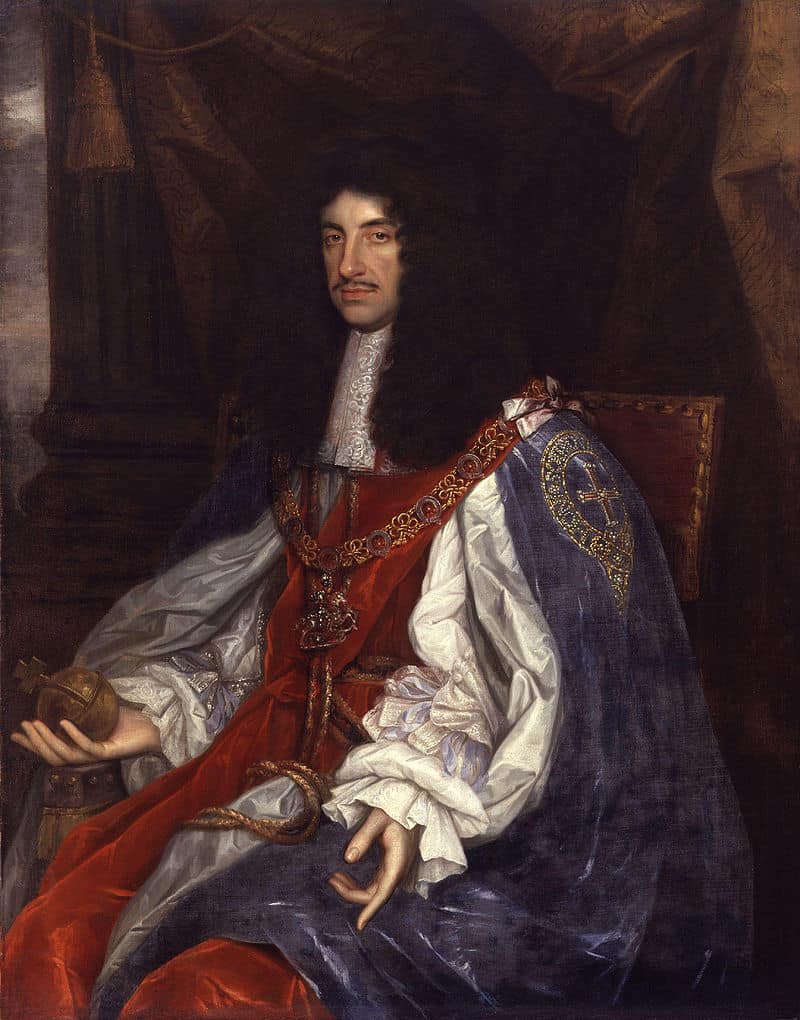
So, in addition to a desire to imitate the Royals, wigs also became popular among the masses because they were an easy way to imitate beautiful hair, which was seen as a sign of health and wealth. They could also be easily styled into unique, eccentric, or difficult-to-reproduce styles, and then taken off and safely stored away.
Wigs were also something of a flex as they were expensive both to make and to maintain; therefore, they became a class marker and a status symbol. Large imposing wigs, in particular, became so closely associated with the rich and powerful that they spawned the term “big wig.
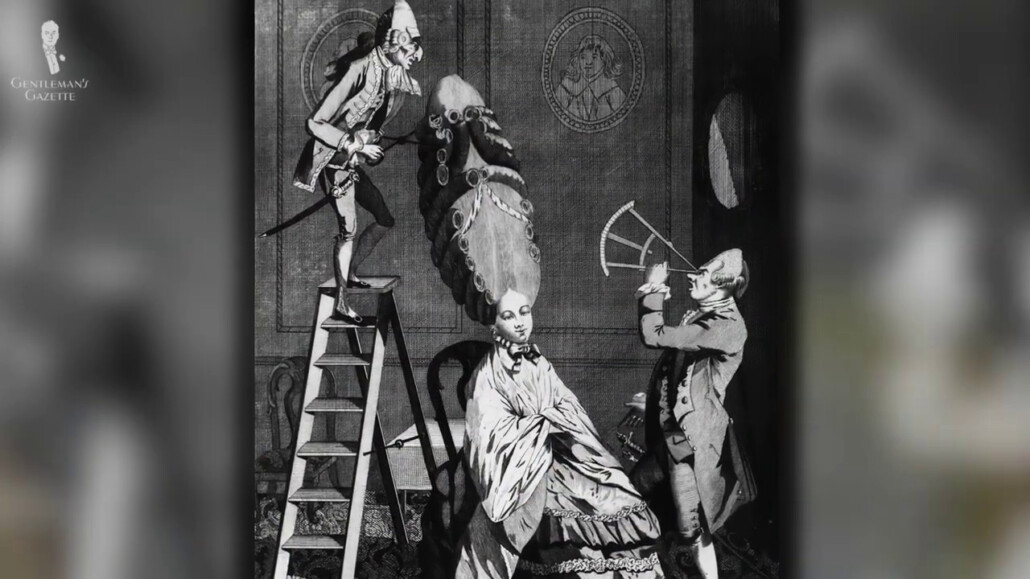
Wigs also served a practical purpose, though, as head lice and other vermin were rampant at the time, and it was difficult to wash one’s hair properly and regularly. So, many men cut their own natural hair extremely short for cleanliness and then wore wigs over the top. Sometimes, their own hair was cut off and used to make their wigs.
Wigs could also be worn to partially obscure the symptoms of illnesses like the patchy hair and baldness associated with syphilis.
Top 5 Hair Loss Treatments for Men
17th-century wigs were extremely long and voluminous, meant to express vitality, wealth, and personal beauty—all things I definitely associate with Dustin Hoffman in “Hook.”
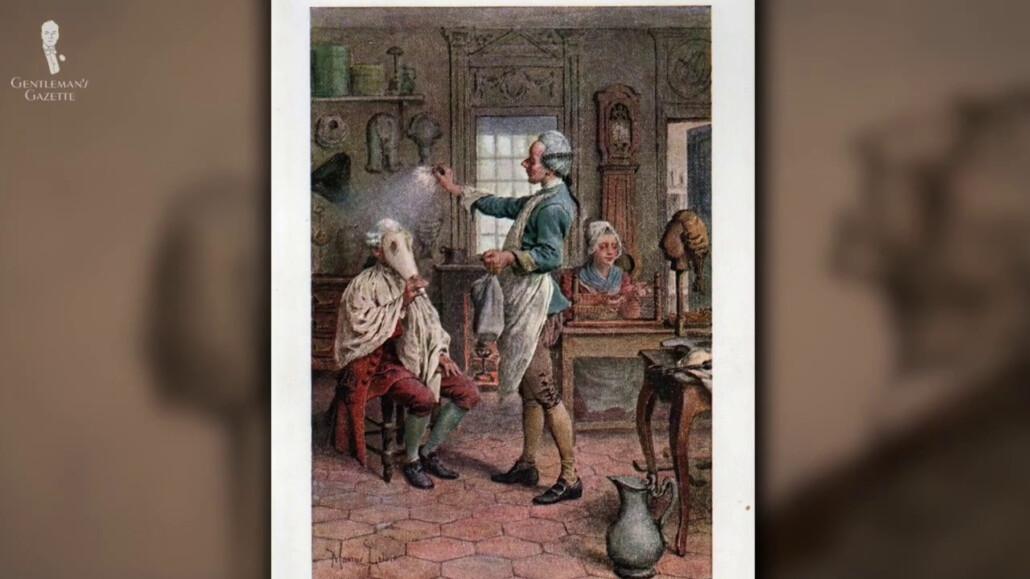
In the 18th century though, wigs began to be powdered, giving the impression that hair was gray with age. This was meant to impart an air of intelligence, dignity, and experience—plus, it didn’t hurt that the starch used to powder wigs could kill parasites and hide the musty odor of an old wig.
As the 18th century wore on, wigs began to decrease in size, more closely resembling natural hair. That is until the 1760s, when English dandies adopted ostentatious fashions, including wigs, that they called “macaroni.” This was in reference to the continental fashions of Italy that were popular at the time. You might still be familiar with this term by way of the lyric “Stuck a feather in his cap and called it macaroni” from the song “Yankee Doodle.”
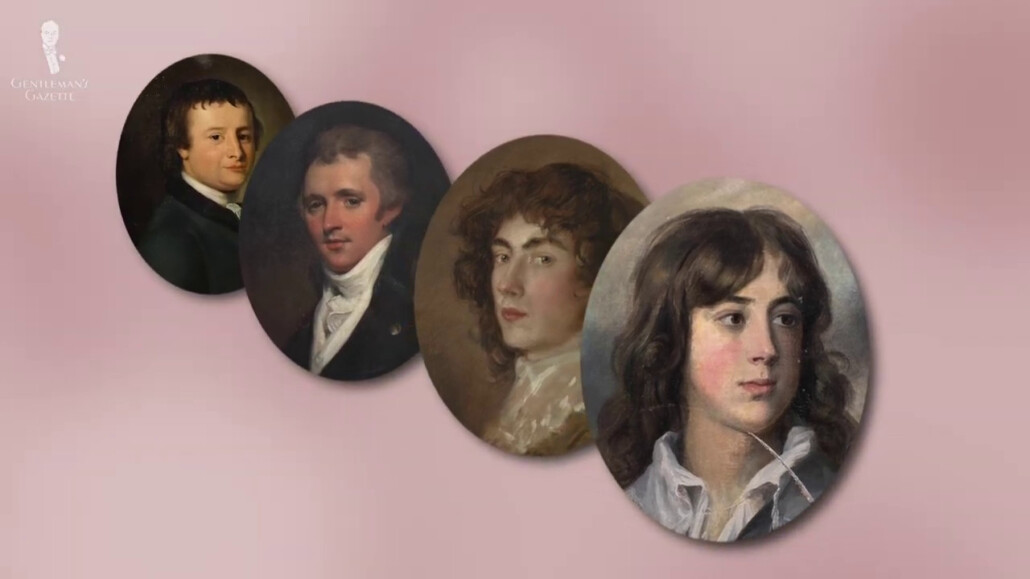
By the end of the 18th century though, wigs began to falter in their popularity, and they were essentially extinct by the early-19th century. We’ve previously called wigs one of the worst historical men’s fashion fails in this post, but why were wigs hair today, gone tomorrow? Well, we’ve identified a number of reasons.
Why Men Stopped Wearing Wigs
1. Changing Masculine Aesthetics
The late-18th century saw a seminal menswear event known as the “Grande Renonciation Masculine” or “Great Male Renunciation.” As you can probably guess from the name, it originated in France and was essentially a rejection of the vibrant, ostentatious, and exuberant men’s fashions that had been popular in Europe for centuries.
Wigs, in particular, were cast aside for being showy, affected, and unnatural. This was because of an increasing desire for naturalistic and classical aesthetics, influenced by the broader movement of the Enlightenment. A more natural, proportioned, and or organic appearance was now the preference, and this extended to real hair as well. This was in contrast to the artificiality of wigs, especially exuberant over-the-top wigs.
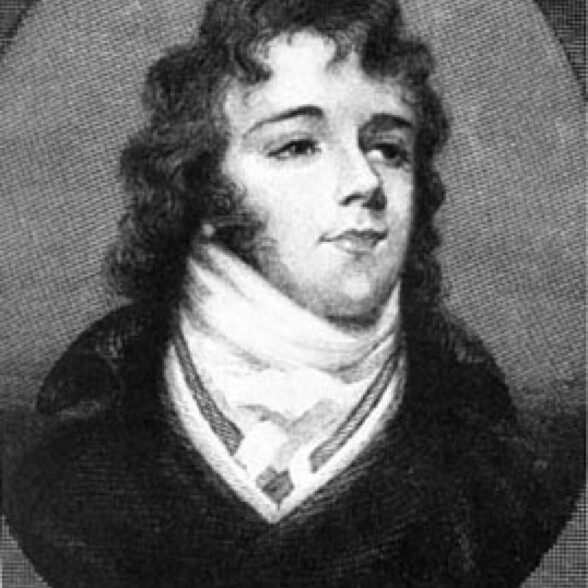
BEAU BRUMMELL
Called Out Wigs
Beau Brummell, one of the first modern menswear influencers, was an early adopter of the ideas of the Great Male Renunciation, and wigs were one of the offenses most often called out by Brummell and his fellow Regency-era Fashion Police.
So, as ideal male aesthetics became more naturalistic and sleek, there was no room for wigs, literally or figuratively.
2. New Hair Fashions For Men
After centuries of long luxurious locks being associated with virility and vitality, the fascination with all things classical that bloomed during the Enlightenment created new interest in shorter, simpler hairstyles associated with the heroes of antiquity. The Great Male Renunciation also fostered the opinion that long hair was excessive and unnecessary. Both of these factors then led to the popularization of shorter but still artfully groomed hairstyles.
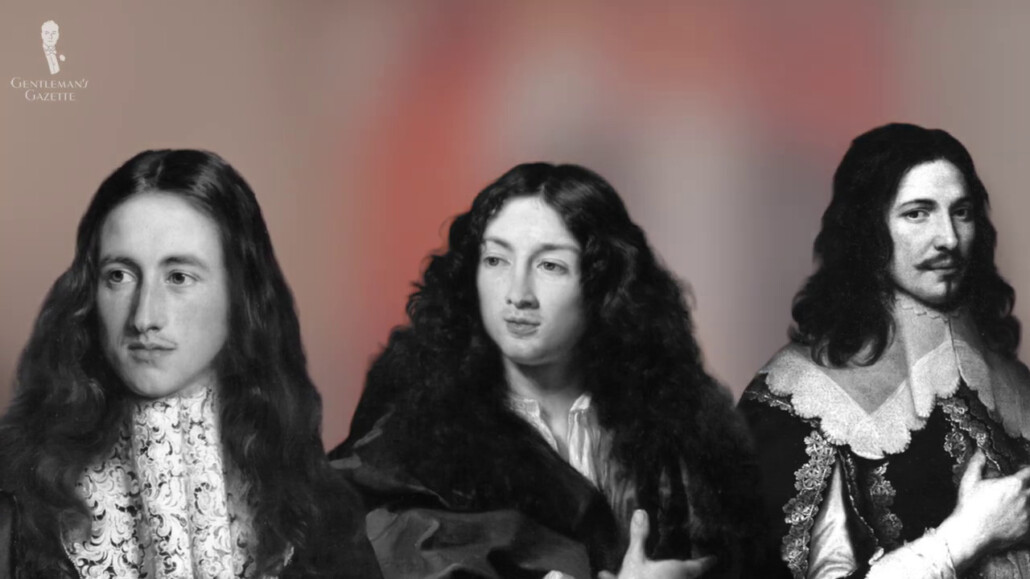
So, natural hair (even if it didn’t appear perfect like a wig could) was still seen as a sign of good health, good values, and good taste, and the wigs of the time couldn’t properly mimic these trendy, new looks. As they fell out of favor, one trend was effectively replaced by another.
5 Classic Hairstyles + Men’s Haircut Tips
3. Negative Associations With Wigs
In addition to aesthetic principles, the Enlightenment also brought about revolutionary ideas that emphasized political and social equality as an abstract ideal, and after centuries as status symbols, wigs were largely rejected by these new political thinkers as an outdated, backward way of living.
American Patriots mostly eschewed wigs, thinking them antithetical to a classless political society. Thomas Jefferson, for instance, stopped wearing wigs after he was elected to the Office of President.
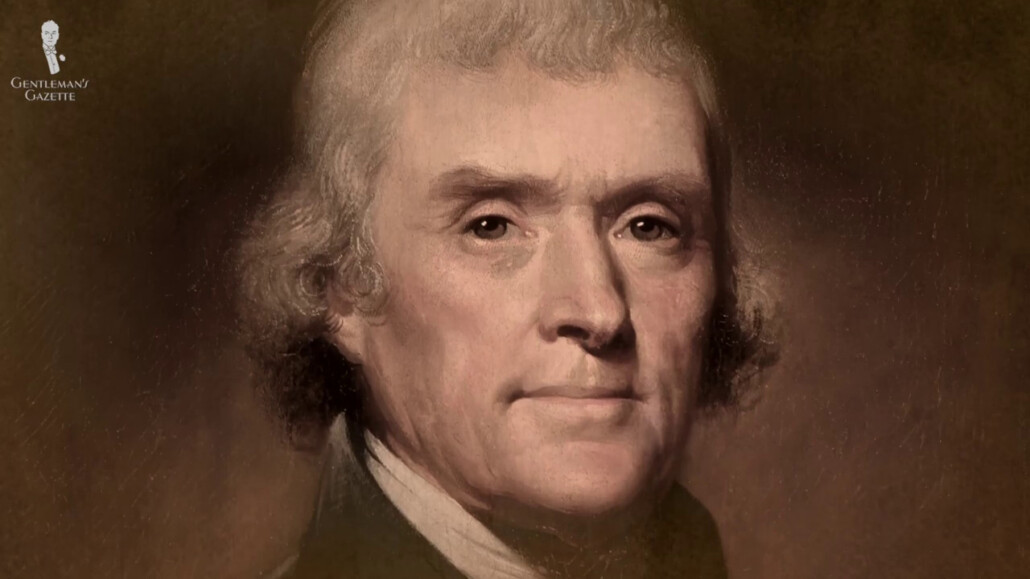
Meanwhile, in France, wigs were closely associated with the monarchical regime that was deposed during the French Revolution, and the post-revolutionary Emperor of France. Napoleon Bonaparte, made it known that he was opposed to the revival of wigs as a fashion. Not surprisingly then, when King Louis XVIII retook the French throne in 1814, he tried to reinstate wigs as the fashion of the time, but he largely failed.
4. Expense of Wigs
One reason that wigs were primarily associated with the wealthy and privileged was because of their hair-raising price tags. Around the year 1700, a typical everyday wig for a London gentleman cost about 25 shillings, equivalent to a week’s pay for a day laborer.
Wigs favored by the nobility could cost even more, topping out at around 40 pounds or around 12,000 dollars in today’s money. This was because while cheaper wigs could be made from the hair of animals like yaks, goats, or horses, finer wigs were made from human hair. To create the voluminous excess of hair favored by those like Louis XIV, hair from ten men had to be used.
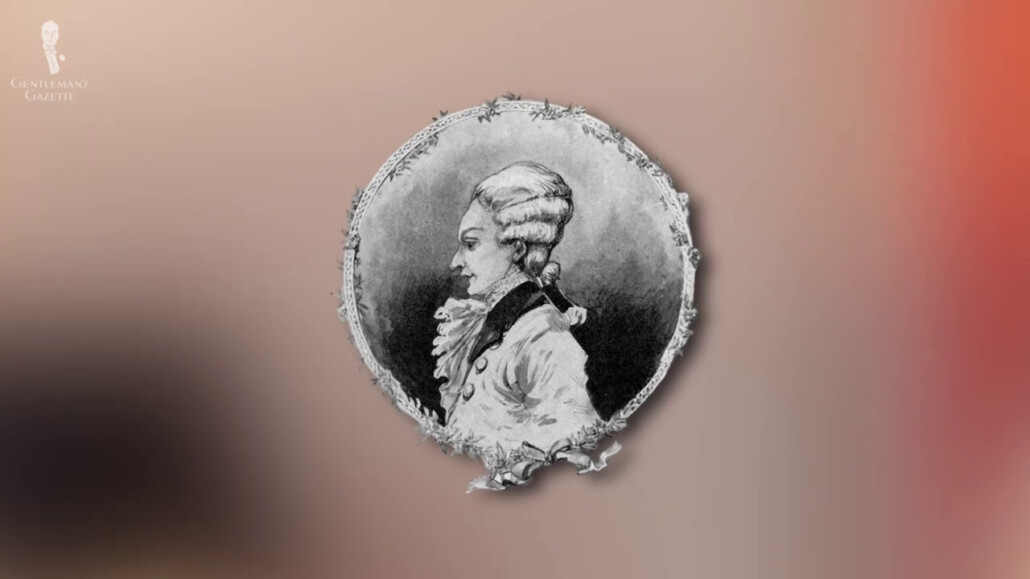
For these reasons, then, wig-making was considered a respected profession and highly skilled labor. Master wig makers could charge sizable fees for their services, further contributing to the overall cost. Léonard Autié, the hairdresser to the Court of King Louis XVI, charged the equivalent of 800 dollars for one styling session.
Following the Great Male Renunciation, though, the changing values of the early 19th century saw spending great sums of money on wigs as extravagant and undignified. So, wigs—now perceived as wasteful—fell out of favor.
5. Inconvenience of Wigs
Considering that even parodies of the time often depicted wigs as featuring structural supports, it’s safe to say that wigs weren’t always convenient. Obviously, these depictions were exaggerations, but they still hint at some of the inconveniences associated with wigs.
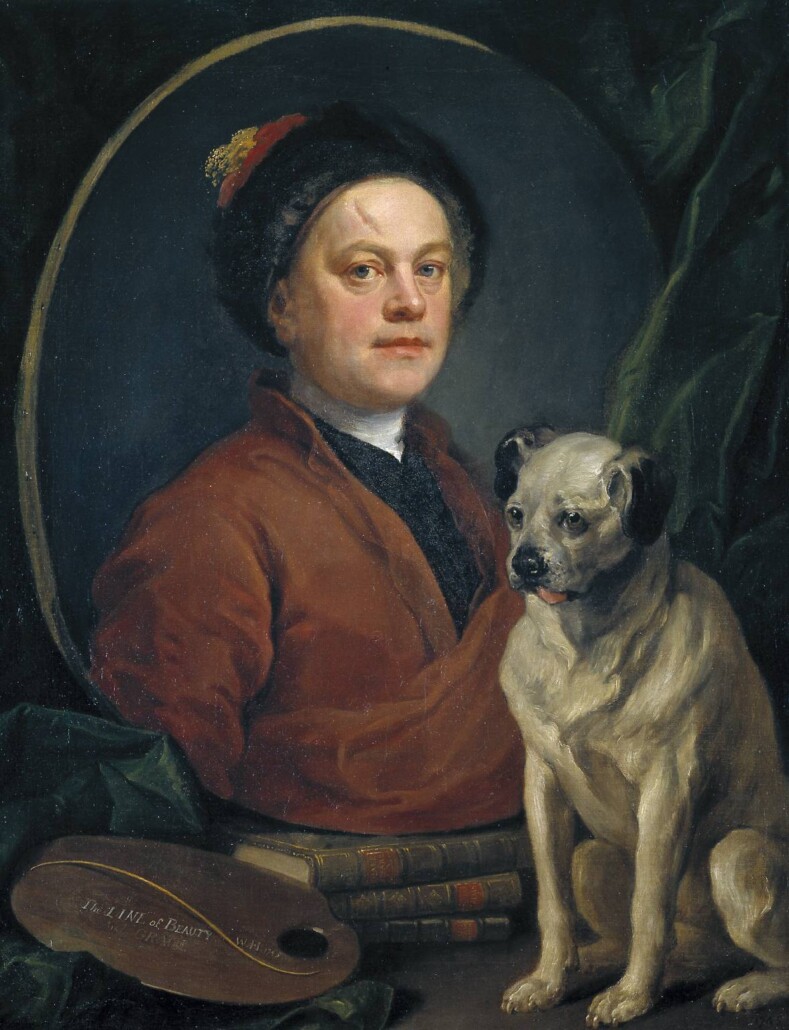
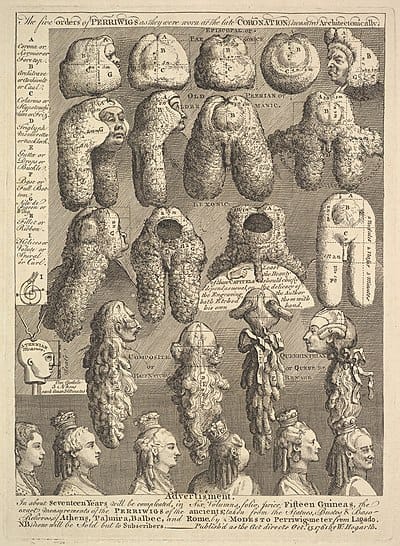
As early as 1761, English artist William Hogarth was mocking the ludicrous size of wigs in illustrations like the “Five Order of Periwigs.”
Large wigs rested heavily on the head and could sometimes be uncomfortable as they weighed several pounds. Even smaller wigs could weigh a pound or two, and because they were often tightly assembled, wigs could be stuffy and trap heat.
There was also itchiness that could be caused in part by the knits and similar pests that infested wigs. It was also caused by the unpleasant texture of the hair, which could be heated, baked, or even boiled to achieve those gravity-defying curls.
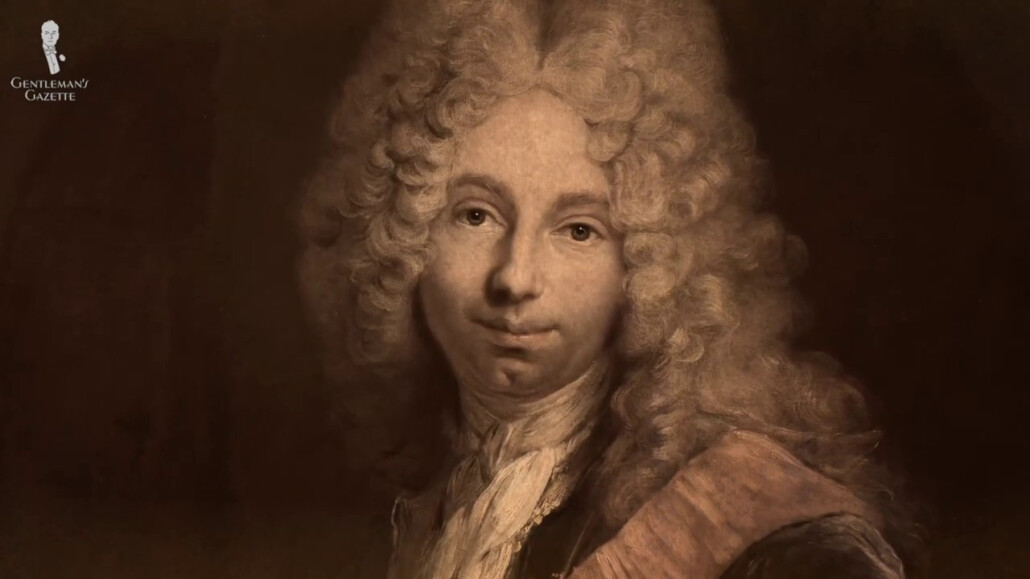
Wearing a wig could be so unpleasant that some men even disguise their real hair as a wig. This way, they could benefit from the social cache with less hassle. George Washington, for instance, styled and powdered his naturally red hair to resemble a wig, even though he rarely actually wore one.
Wigs had originally been favored for their ability to hold fantastic shapes and to be cleaned more easily than real hair, but as outlandish hairstyles fell out of favor and hygiene standards evolved, wigs became less popular.
6. Improved Hygiene and Hair Care
Around the turn of the 18th century, Europe was undergoing a hygiene revolution. This was because the decreasing cost of cleaning products like soap was coupled with an increasing interest in regular bathing.
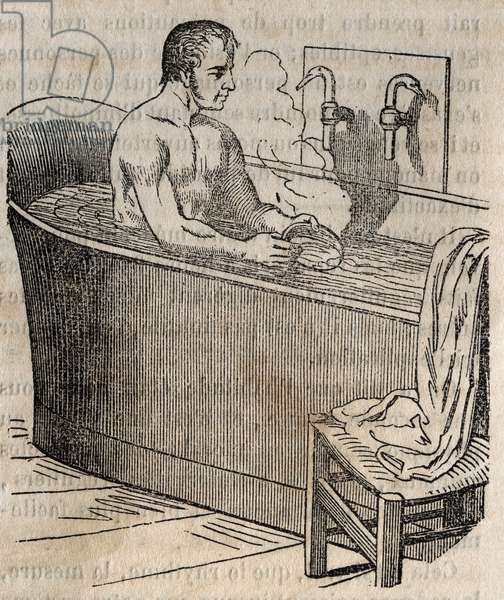
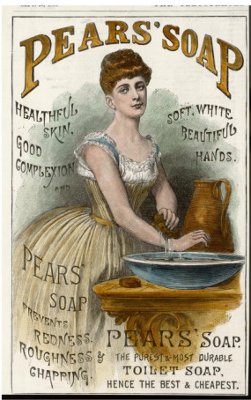
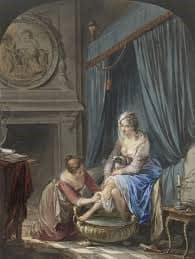
Beau Brummell, for instance, adopted as one of his primary rules for gentlemen that one should bathe daily, and we think this is a pretty good rule in general.
This emphasis on personal cleanliness meant that men were less likely to simply cut off all of their natural hair, but instead, to take more time cleaning and delousing it. As such, they had less reliance on wigs.
Knowledge about soap production was also improving with the introduction of specialty products like shaving soaps. These were formulated to clean but not dry out or damage the hair. Hair could, therefore, appear healthy, lustrous, and clean and be more easily styled, leading to less reliance on wigs. In fact, there was even a concern that wigs could be a vector for disease.
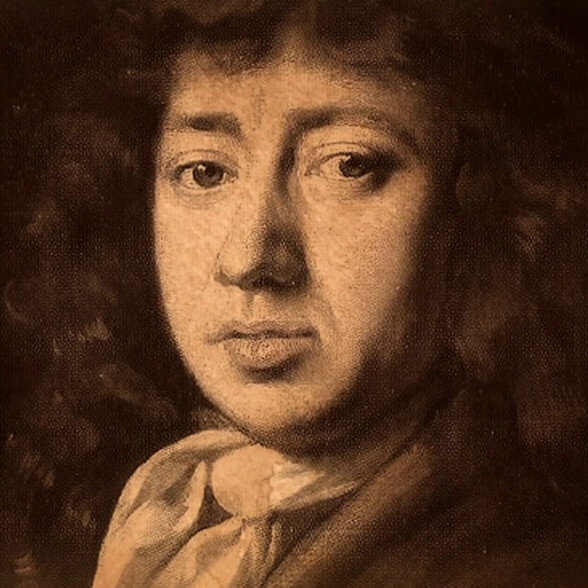
FEAR OF WIGS?
Samuel Pepys
In the 17th century, English diarist Samuel Pepys was afraid to purchase a new wig. This was because he thought it might have been assembled from the hair of people who had died in a recent round of the plague. So, with improvements in grooming habits and hair styling options, wigs were no longer seen as necessary and sometimes even detrimental.
Due to these factors, wig-wearing among social elites and then among the common people had essentially disappeared by the middle of the 19th century.
15 Healthy Hair Tips for Men
Where Wigs Persisted
Despite the decline, there were, however, a few select areas where wig-wearing persisted. For example, it was considered elegant to dress some servants, especially footmen, and coachmen, in livery, with wigs. This persisted long enough that it was even written about in F. Scott Fitzgerald’s 1922 story “The Beautiful and The Damned.”
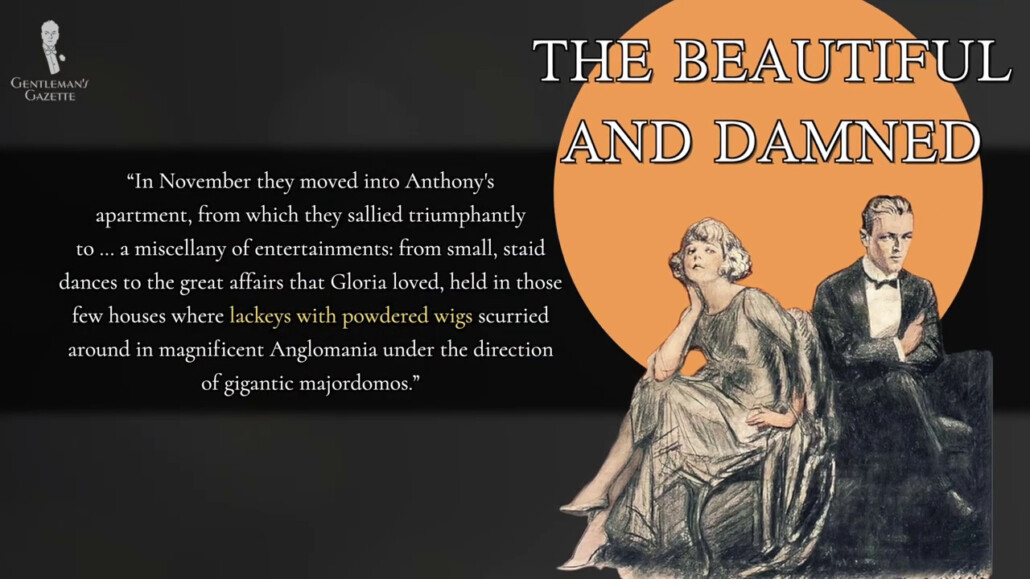
At some select state functions, this trend even continues today. Meanwhile, dramatic wigs meant to convey authority and grandeur were worn as a sort of badge of office by some government officials like the senators of the Republic of Venice. This was and is also true of legal officials like judges, lawyers, and barristers in current and former Commonwealth countries. This is meant to convey the timeless and consistent nature of justice and the law and a sense of tradition, even though these days, these wigs are often worn more like hats than hair pieces.
Conclusion
In conclusion, then, wigs did enjoy several centuries of popularity in the Modern West, but as masculine aesthetics shifted, the pomp, exuberance, and artificiality of wigs made them fall out of favor, and it doesn’t help that they can sometimes be troublesome to wear.
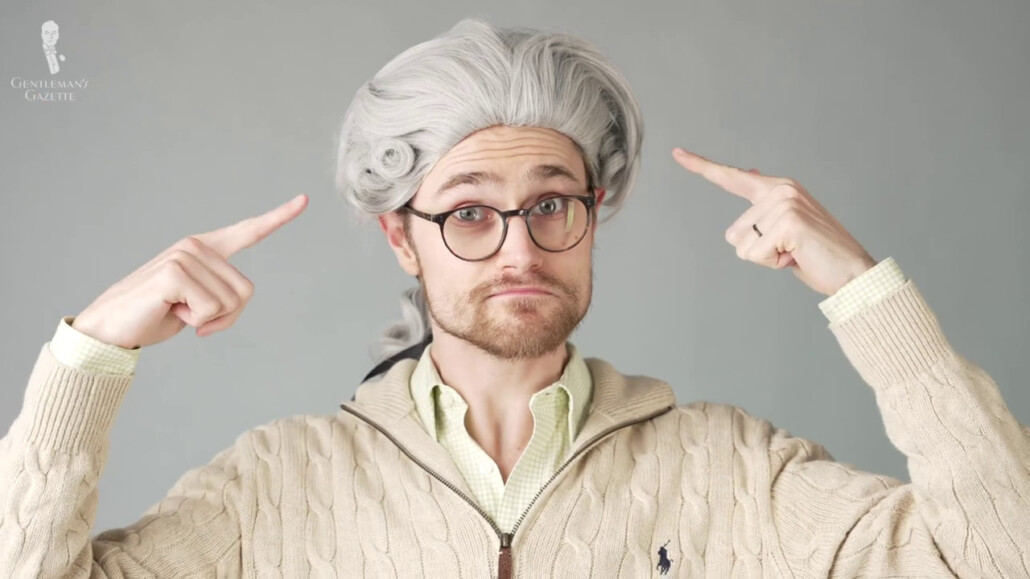
Can you think of any more reasons why wigs like these fell out of favor? Let us know in the comments below.
Wigs FAQs
What is a wig?
A wig is an artificial hairpiece worn on the head, usually to resemble hair. While wigs can be worn to hide baldness or premature balding, easily change the look of one’s hair, or be worn as part of a costume, this article is primarily concerned with wigs as a historical fashion accessory.
What is a powdered wig?
A powdered wig is a wig that has hair powder, usually made of starch, applied to it. This powder made the wig look like white hair, which was considered a sign of respectability and refinement. The powder could be scented with lavender, orange, bergamot, and other pleasing smells. It also helped to kill any lice or vermin that lived on the particles of the wig.
What societies wore wigs?
In recent Western history, wigs are most often associated with the British and French nobilities of the 16th to 18th centuries, although wigs were popular across Europe and in large parts of the world, like colonial America, during this time period.
Why did men wear wigs?
During this time period, men wore wigs for several reasons, including to obscure thinning or graying hair, to make their hair appear more vibrant and lustrous, and to follow the larger trend of wearing wigs. Because wigs were expensive, they were also a sign of wealth.
What famous historical men wore wigs?
Wig-wearing is commonly associated with King Louis XIII of France, King Louis XIV of France, King Charles II of England, and King James I of England. Royal courtiers followed suit, and wigs became a trend in menswear. Four American presidents also wore wigs at various times in their lives: John Adams, Thomas Jefferson, James Madison, and James Monroe.
How much did wigs cost?
Around the year 1700, a decent-quality wig cost the same amount as a common Londoner day laborer made in a week.
Did men wear wigs because of a syphilis outbreak?
Syphilis was rampant in Early Modern and Modern Europe, but it likely had only a minor effect on wig-wearing. It is sometimes argued that wigs came in favor to hide the patchy hair loss and bloody sores on the scalp that are a symptom of syphilis and, therefore avoid public embarrassment. While wigs could do these things, they were already popular for many other reasons.
Why did men stop wearing wigs?
Men primarily stopped wearing wigs because ideas about masculine beauty underwent a change that no longer emphasized the qualities typical of wigs, and because wigs, as a trend, started to fall out of fashion. Wigs were also extremely expensive, could be inconvenient to wear, and were sometimes considered unhealthy.
Outfit Rundown
Today, I’m wearing a fairly casual outfit that, despite my best efforts, doesn’t really go with a wig. The main element is my oatmeal-colored, cable knit, quarter zip sweater from Polo Ralph Lauren. I’m wearing it over a dress shirt that features a lime green grid pattern on a white ground, as well as a simple point collar and barrel cuffs.
My trousers are plain medium brown in color, and my shoes, to go along with the casual feel of the outfit, are also in medium brown. They’re moccasin-styled suede loafers from the brand Velasca.
In the outdoor footage, I’m wearing a flat cap in medium brown tones and in tweed that has a nice fall feel for the early autumn. I’ve also left any product out of my hair and let my beard grow. Rounding out my outfit today are my socks from Fort Belvedere in mid-brown and green shadow stripes and my fragrance from the Roberto Ugolini collection. I’m wearing the scent called Loafer today because its woody character is good for the early autumn, because the green of the bottle harmonizes with my outfit, and, of course, because I’m wearing loafers.
For the socks I’m wearing, as well as a wide array of other men’s accessories and fragrances from the Roberto Ugolini collection, you can take a look at the Fort Belvedere shop.
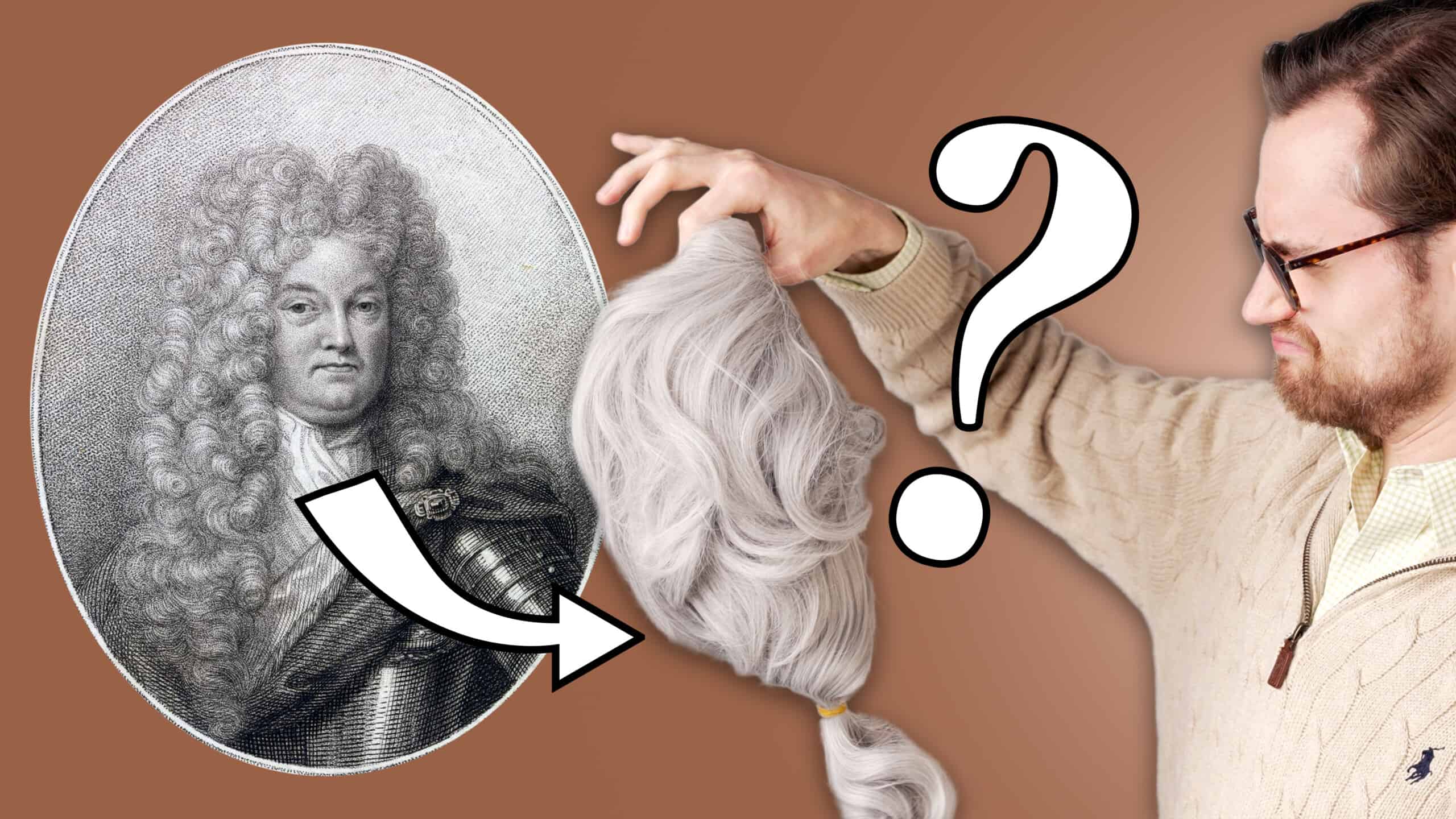

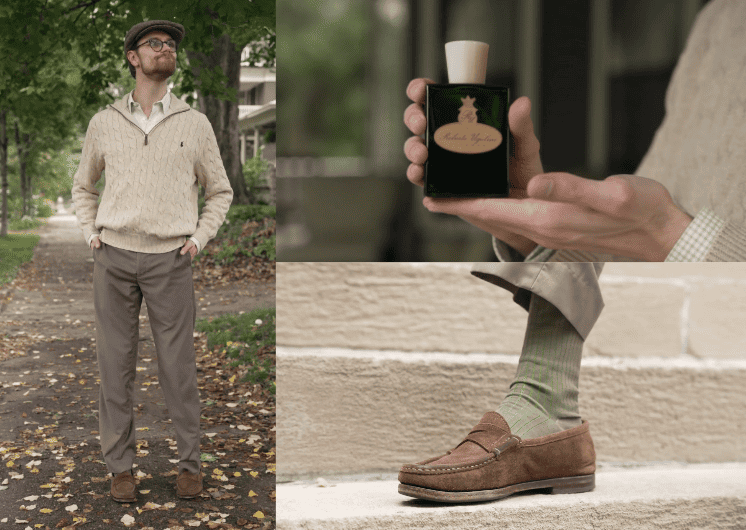
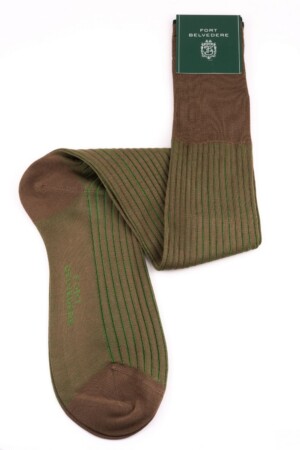
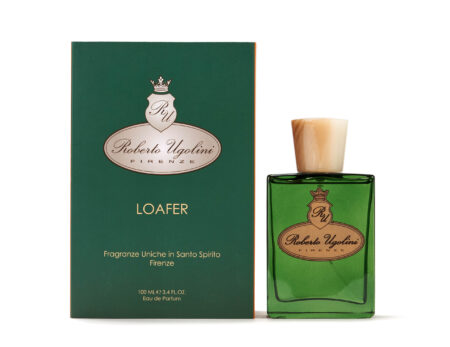
Another great video on the history of men’s styling. I’ve always wondered why and how men’s wigs came and went, and my online research didn’t provide me with much information. (I assumed that keeping the head warm with a wig would be a benefit in colder climates). I’m glad you brought in the social aspects of the trend.
Next, I would appreciate a video on breeches. I could never understand why or how they evolved, and they seem to have gone out of fashion at the same time wigs did, replaced with trousers.
The Duty on Hair Powder Act of 1795 in the UK sounded the death knell on wigs on this side of the pond. Now only barristers and judges regularly wear wigs. The last speaker of the House of Commons to wear a full bottom wig was Bernard Weatherell who retired in 1992
Can you identify the gentleman at 7:30 who is wearing the double-breasted coat? He looks familiar, but I can’t quite put my finger on who he is.
Hi Steve, this is a portrait of Louis Antoine Léon Riesener by the artist Eugene Delacroix
Hi Jack, Thank you for the information and quick reply. It is very much appreciated.
My pleasure!